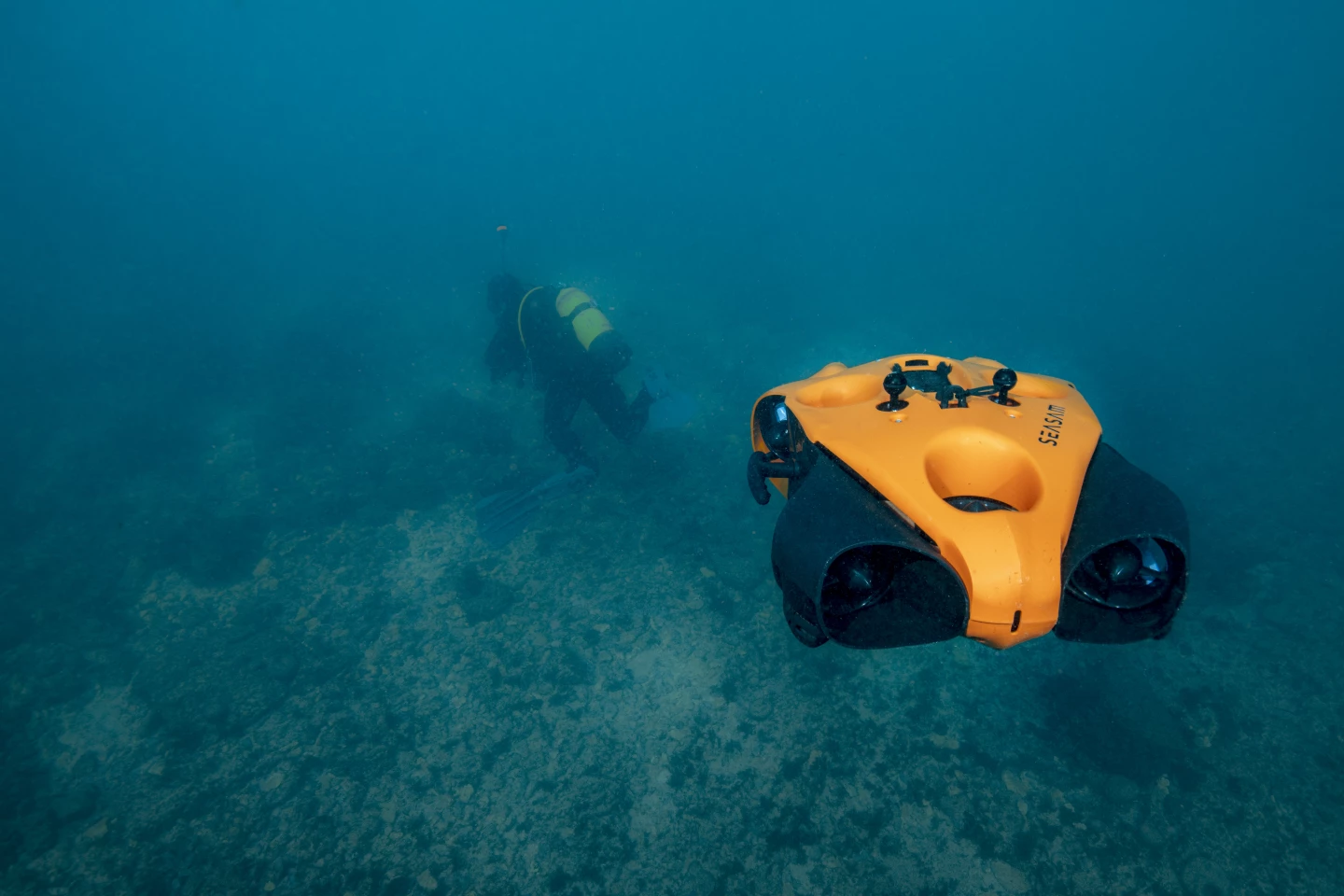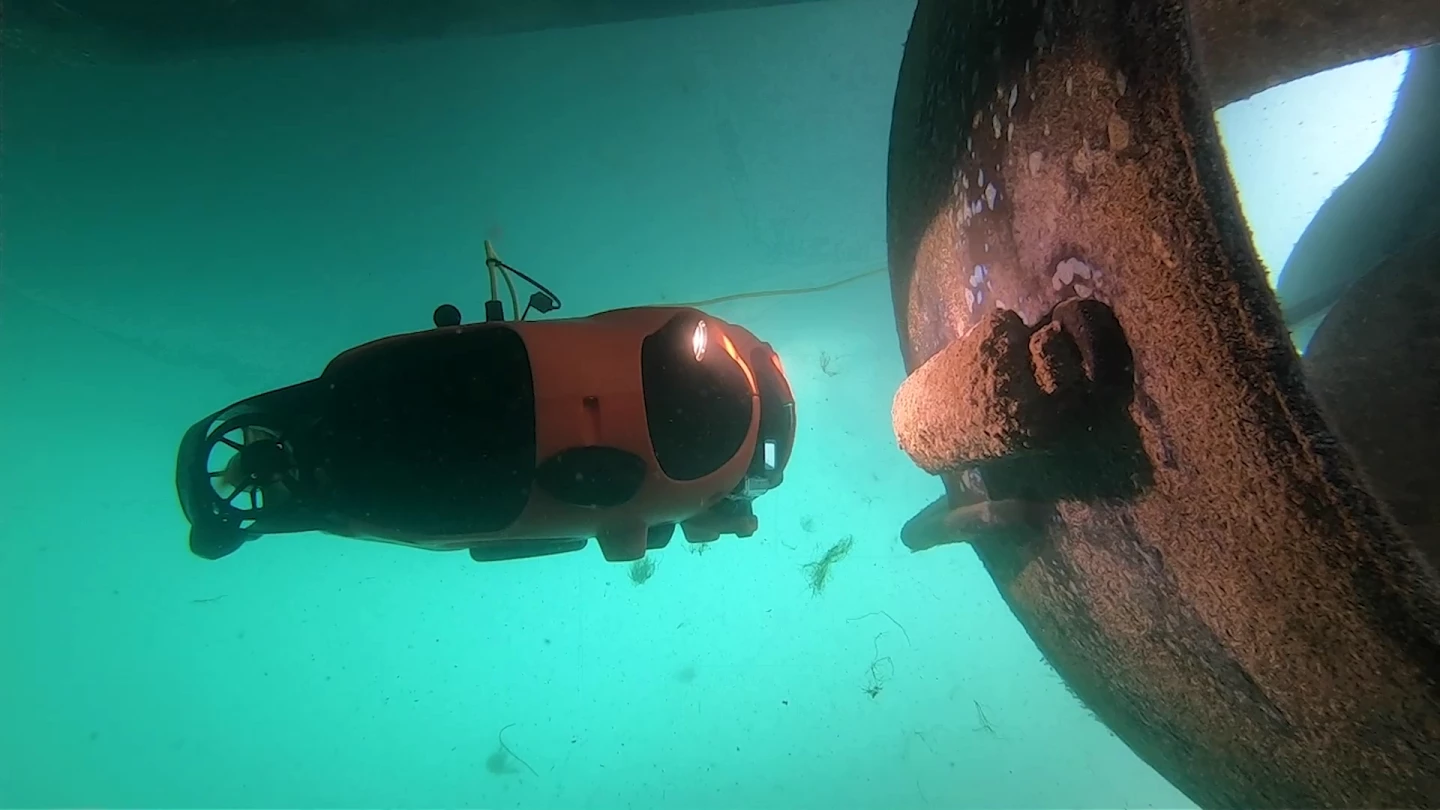Back in 2016, we told you about the iBubble, an underwater drone that autonomously follows and films scuba divers. Well, it now has a more capable industrial-use big brother, known as the Seasam.
Manufactured by French marine tech company Notilo Plus, the Seasam actually first hit the market in 2019. That said, it recently gained attention when it was featured in the horror film The Deep House, in which a scuba diving couple explore an underwater haunted house … and yes, that is kind of a cool premise for a movie.
Like the iBubble, the Seasam is capable of wirelessly following and shooting HD video footage of its scuba-diving user. It does so via a combination of acoustic and computer vision technologies.
From a distance of up to several dozen meters, it's able to home in on acoustic signals emitted by a control unit carried by the user. This lets it find the person even at night, or in otherwise low-visibility conditions. Once it gets close enough, the drone uses its onboard 1080p/30fps camera and visual recognition system to actually spot the diver – it can then keep them focussed and centered in its shot while it moves along with them. As it does so, it uses its own sonar system to detect and avoid obstacles.

The control unit is also utilized to send acoustic-signal commands to the Seasam. Although the user can't actually steer the drone, they can adjust its following distance/angle, switch on its spotlights, and start or stop recording. Additionally, they can set it to move in front of them (so they follow it), to circle around them while they're stopped, to stay in place while they swim away, to surface on its own, or to come right up to them so they can grab it and manually point it at whatever they wish to film.
Also like the iBubble, the Seasam can be remotely operated from the surface by hooking it up to a long, reeled communications cable. The user then utilizes a tablet-equipped handheld remote to steer it, and to view its real-time video. Via the same visual recognition tech that it uses to follow divers, the Seasam (but not the iBubble) can subsequently be instructed to keep targets such as ship hull sections, dock pilings, or underwater structures centered in its shot as it moves around them – or with them, if they're mobile.

In the case of the Seasam, another remote-control option is to utilize a motorized miniature surface vessel known as the Navigator. It's connected to the drone via a shorter length of cable, and wirelessly communicates with the operator via Wi-Fi. This means that the cable only needs to be a bit longer than the drone's required diving depth, instead of being long enough to stretch all the way to the shore.
Additionally, because the Navigator is able to determine the underwater location of the Seasam relative to itself, it's able to provide the GPS coordinates for anything spotted by the drone.

As far as basic specs go, the Seasam is equipped with seven thrusters; has a maximum dive depth of 100 m (328 ft) (the iBubble is rated to 60 m or 197 ft); can run for 1.5 hours per 2.5-hour charge of its removable 6,600-mAh lithium-ion battery; weighs 9 kg (20 lb) out of the water; and utilizes two integrated 1,000-lumen LED spotlights. Unlike the iBubble, much of its hardware and software is upgradeable – for instance, it can be equipped with a 4-hour battery, a 4K camera or 10,000-lumen lights, plus it has a mount on top for third-party sensors and other devices.
Pricing for the Seasam starts at €12,000 (about US$13,623). It can be seen in action, in the following video.
Sources: Notilo Plus, edgeROV








